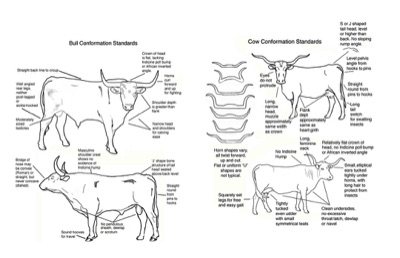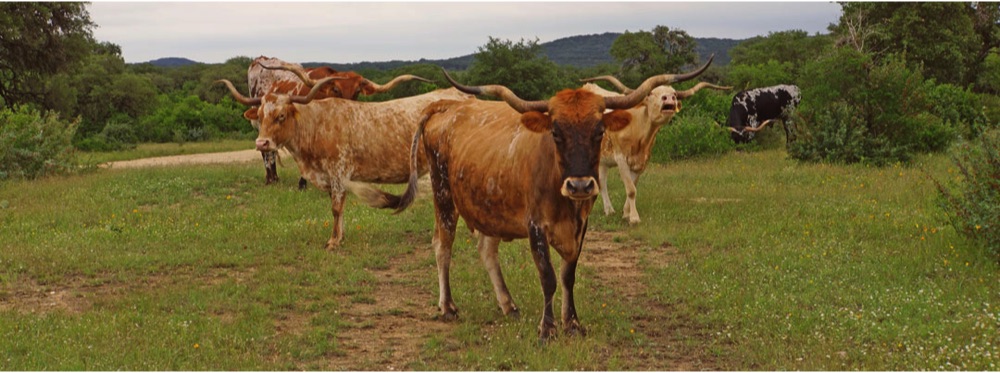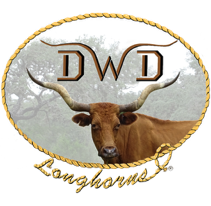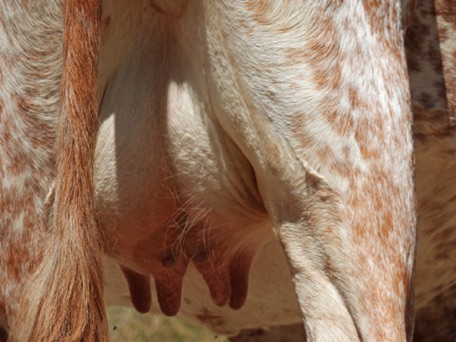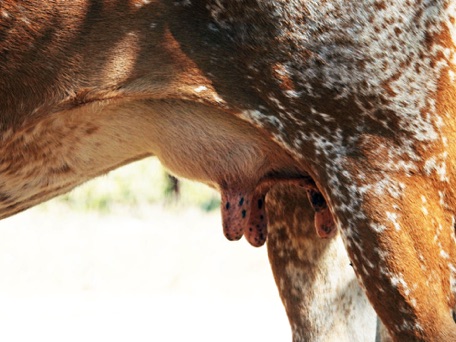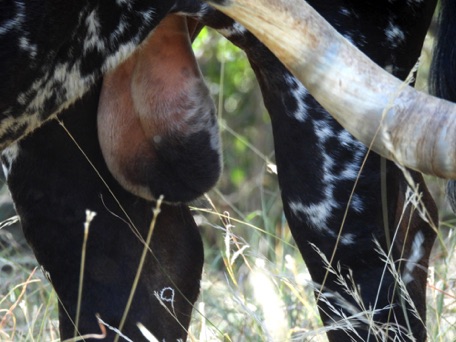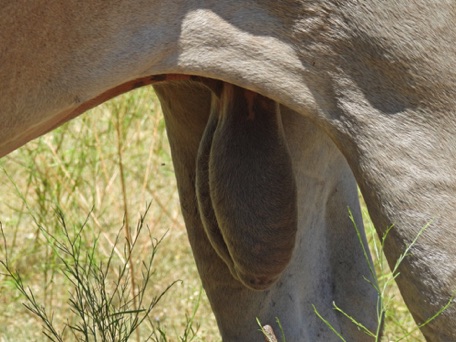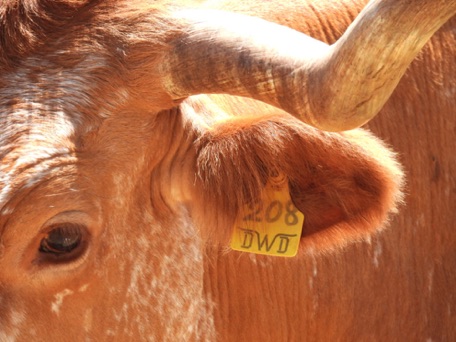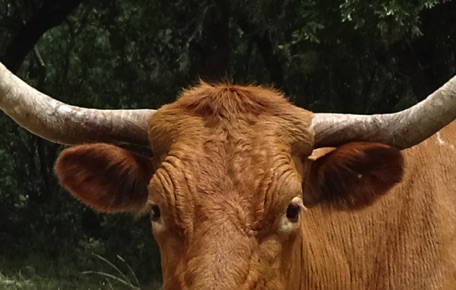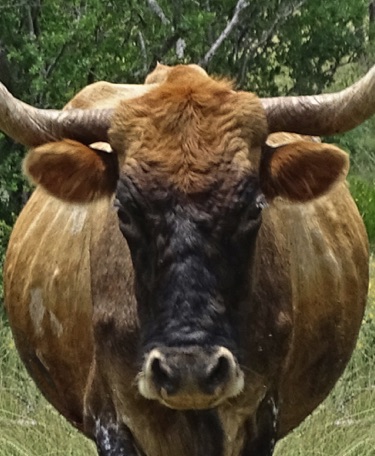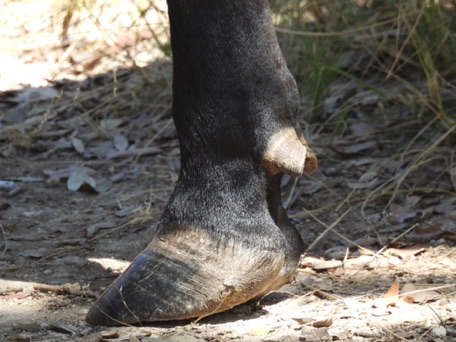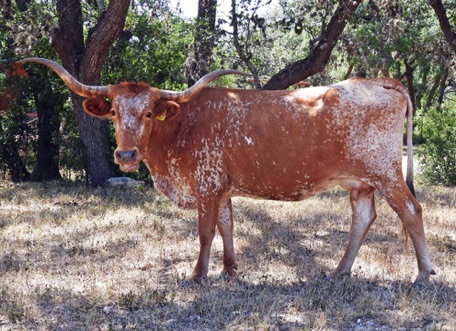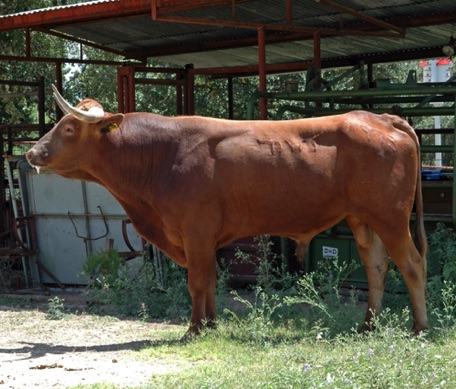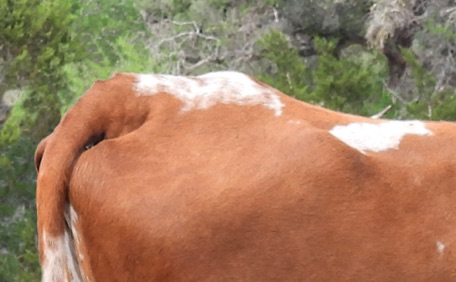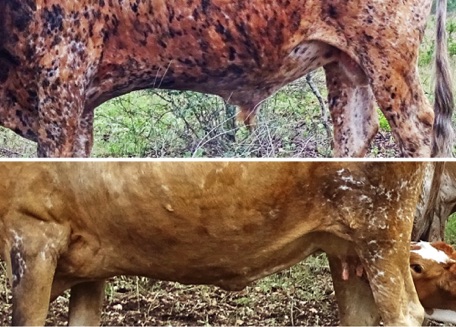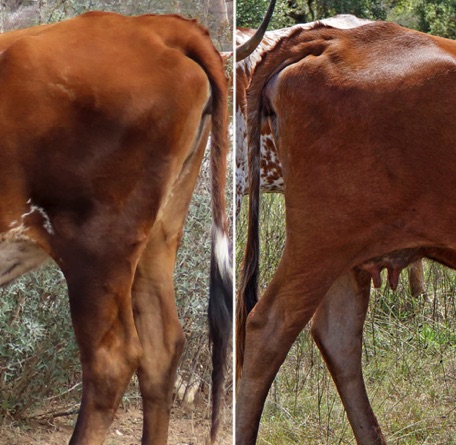Phenotypic Traits of DWD Conservaton Texas Longhorns
Phenotype refers to an individual’s observable traits, such as body conformation, head and horn shape, as determined by both their genomic makeup (genotype) and environmental factors.
Leg conformation in conservation Texas Longhorn cattle is more like dairy breeds than other beef breeds. Although Texas Longhorn is a beef breed, they do not possess overly developed rounds or wide shoulders. Their evolution created an animal adapted to semiarid climates where many forage species are adorned with thorns. Texas Longhorns do not have loose navels, sheaths or briskets that might be punctured or torn on their long treks between grazing and watering sites. Their light-to-medium bone structure enables easy travel and easy calving. Narrow foreheads and shoulders are presented for uncomplicated, unassisted deliveries in remote brush country.
The coccygeal vertibrae protrude higher than the spine. This facilitates a high tail that protects the vulva. A slight tilt of the pelvis prevents fecal contamination of the reproductive tract. The flexible spine permits long, effortless strides. The light bodies of Texas Longhorns are athletic contributing to greater endurance. Large nostrils allow for ample oxygen intake and long hair in the ears and their long tail switch help to keep off insects pests.
What is a Conservation Texas Longhorn?
